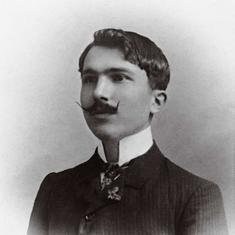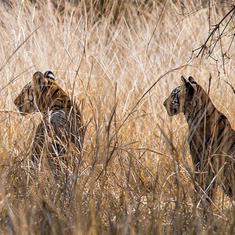Lyrical descriptions of food, hunger and eating in novels can go on echoing in one’s head – or stomach – just like gushing depictions of nature. In my notebook, the most unforgettable lines are from RK Narayan’s The Guide. “He had a craving for bonda, which he used to eat in the railway station stall when a man came there to vend his edibles on a wooden tray to the travellers. It was composed of flour, potato, a slice of onion, a coriander leaf, and a green chilli – and oh! How it tasted – although he probably fried it in anything; he was the sort of vendor who wouldn’t hesitate to fry a thing in kerosene, if it worked out cheaper. With all that, he made delicious stuff...”
Counted among the world’s great writers, often mentioned in the same breath as Balzac, Chekhov, Dickens, Faulkner and Gogol, his many admirers comprised the likes of EM Forster, Graham Greene, Somerset Maugham, John Updike, Germaine Greer and even the exigent VS Naipaul – but, being Naipaul, with reservations. In An Area of Darkness Naipaul noted that the “virtues of RK Narayan are Indian failings magically transmuted. I say this without disrespect: he is a writer whose work I admire and enjoy.” Essentially, Naipaul’s grievance was that Narayan’s fictional India hadn’t prepared him for the factual India that severely culture-shocked him during his first visit to the country of his ancestors – suggesting that his own shock was made worse by Malgudi.
One of the less studied aspects of his writings, by the way, is how Narayan employed food to great effect in his stories. The Vendor of Sweets has edibles in its title; The Man-Eater of Malgudi suggests that humans can be part of the food chain; the protagonist in Waiting for the Mahatma suffers from a gnawing craving for freshly-cooked South Indian dishes, but is instead offered stale short eats: “Kara sev, vadai and potato bonda...”
In his short story, “The Martyr’s Corner”, the focus is exclusively on junk-food – the protagonist being one of those hawkers who peddle goodies from the roadside every evening: Narayan’s olfactory imagery excels in describing the dosai “looking like layers of muslin”, and chapattis with free-flowing chutney, duck’s eggs “resembling a heap of ivory balls” for those in need of protein, a sight so tempting that “even a confirmed dyspeptic could not pass by without throwing a look at it and to top it all there’s puffy melt-in-the-mouth bondas too.
Ah, those lethal bondas! Salty and deep-fried, they mess with my BP, my medication must be upgraded, I burp from undigested chillies, the spicing drives my guts nuts. And it is in The Guide that Raju, the reluctant guru, is forced to undertake a fast by his devotees. He gets hungrier and hungrier by thinking of that bonda which used to be on sale at the station where he once worked as a tout, until it takes on hallucinatory powers. It heightens the dramatic tension unbearably as we approach the story’s culmination.
It is an ironic tale. Initially, Raju benefits from the meals brought by villagers to the temple ruin he’s squatting in (they think he’s a holy man), but when drought strikes the land, there are no more free lunches coming his way. This forces him, eventually, to turn into a genuine saint – to conjure up rain through self-mortification. He goes along with it even if he knows that he has no supernatural powers. In the process, he’s transformed from an egocentric crook to a self-sacrificing altruist, from being a tout (or, as he preferred to call himself, a guide) he turns into a guru by accident. But this story had a curious side effect on me. For years, I was unable to pass one of those deep-frying roadside chefs with their vats of boiling oil – probably spuriously recycled like Narayan suggested – without buying a piping hot globular bonda. These deadly globoids always came with lashings of mint chutney which may well have been churned out of greenish gutter water. I knew bonda wasn’t healthy to binge on, but whenever I saw one I recalled Raju’s starvation and had to eat it, as if to support his cause.
Interestingly, Narayan wrote The Guide not at home in Mysuru but in California – where his productivity was hampered by one singular disagreeable factor: The lack of vegetarian fare. Back in the 1950s, vegetarianism hadn’t caught on there, nor were there any South Indian canteens unlike today when Bengaluruan IT experts rule Silicon Valley. In those days most menus in the Bay Area featured nothing but beefsteaks. Americans would question (as described in My Dateless Diary):
“Are you a vegetarian by conviction or religion?”
“I am a born-vegetarian. I cannot eat anything except rice, greens, and dairy produce.”
“Extraordinary! Wonder that you are alive.”
Eventually, in order to endure, the novelist bought a hotplate and lived on curd rice (his favourite dish, always had with lime pickle) until he finished the manuscript. His predicament is clearly mirrored in the hungry protagonist of the novel. The choice of bonda as a literary device is apt, considering that this Udupian dish has been a part of Karnataka’s culinary legacy since at least the 12th century. Food scholar KT Achaya terms it a variant of vada but historically speaking, bondas must have been stuffed with other vegetables because potatoes originated in Peru and are a distinctly colonial-era addition to the Indian pantry that only gained widespread acceptance as a household ingredient in the late 19th century.
I was eventually cured of my addiction by climbing the colossal cliff at Sravanabelagola, known for its massive monolith of Jain saint Bahubali who starved himself to death about one millennium ago – on that very spot – after realising the vanity of hungering for power. The climb up and down the rock made me ravenous, and again, Narayan’s lines replayed in my mind – the drooling Raju’s fantasy of the ultimate gluttony, to “eat bonda for fifteen days without a break”, and the pain of his starvation heightened by the crowds of onlookers, “picnic groups enjoying themselves all over the place”. Once I got down from the hill, to the bus stand where there was, as at almost all bus stops in India, a snack frying man, my appetite for patently insalubrious edibles suddenly vanished. If those ascetics could starve themselves to death, I figured that I could at the very least abstain from bonda-hogging and lose inches from my podgy bonda-shaped BMI-world-record-breaking waistline.
Since then, I’ve not eaten a single bonda.

Excerpted with permission from Digesting India: A Travel Writer’s Sub-Continental Adventures With the Tummy (A Memoir À La Carte), Zac O’Yeah, Speaking Tiger.










